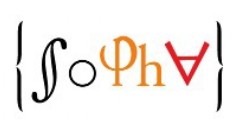Research integrity is a critical issue in science, serving as both a significant concern and a growing field of study. A persistent challenge in this field is establishing robust causal links between scientific misconduct and its hypothesized causes. Yeo-Teh and Tang (2022) highlight the difficulty of integrating individual and systemic factors to develop a comprehensive causal framework. Cartwright (2012) notes that problems of causal attribution are serious issues and hinder public action. I argue that this challenge stems from our current understanding of research integrity. Reframing research integrity in terms of researchers' dispositions to commit misconduct and the research environment's role in triggering these dispositions allows for clearer causal attribution.
Existing understandings of research integrity can be categorized into two main approaches (Neves, 2017). The via negativa perspective defines RI as the absence of misconduct, emphasizing adherence to scientific procedures (Lock, 1994; LaFollette, 2000; Price, 2013). This approach relegates institutions to updating researchers on what to avoid and largely overlooks systemic factors. In contrast, virtue-based frameworks promote positive definitions of research integrity grounded in virtues like honesty and accountability (Meriste et al., 2006; Holman & Elliott, 2018; Khanyile et al., 2006). However, these models can be subjective in practice and disproportionately focus on individual researchers, with systemic factors playing only a background role.
For methodological inspiration, I draw upon Russell's (2010) dispositional analysis of evil personhood, which balances individual and systemic causes of wrongdoing. In this framework, a person's disposition to act wrongly is influenced by individual, intrinsic factors, while the trigger for such actions is rooted in systemic, environmental factors. Both become necessary to cause the misconduct. Applying a similar methodology to research integrity can help fairly attribute causes between individual and environmental factors. This improved causal structure is likely to lead to a more effective public action.
References:
Cartwright, N. (2012). Causal laws and effective strategies. In Arguing About Science (pp. 466-479). Routledge.
Holman, B., & Elliott, K. C. (2018). The promise and perils of industry‐funded science. Philosophy Compass, 13(11), e12544.
Khanyile, T. D., Duma, S., Fakude, L. P., Mbombo, N., Daniels, F., & Sabone, M. S. (2006). Research integrity and misconduct: a clarification of the concepts. Curationis, 29(1), 40-45.
LaFollette, M. C. (2000). The evolution of the “scientific misconduct” issue: an historical overview (44535C). Proceedings of the Society for Experimental Biology and Medicine, 224(4), 211-215.
Lock, S. (1994). Research misconduct: a brief history and a comparison. Journal of internal medicine, 235(2), 123-127.
Meriste, H., Parder, M. L., Lõuk, K., Simm, K., Lilles-Heinsar, L., Veski, L., ... & Sutrop, M. (2016). Promoting integrity as an integral dimension of excellence in research. Printeger.
Patrão Neves, M. D. C. (2018). On (scientific) integrity: conceptual clarification. Medicine, Health Care and Philosophy, 21(2), 181-187.
Price, A. R. (2013). Research misconduct and its federal regulation: the origin and history of the Office of Research Integrity—with personal views by ORI's former associate director for investigative oversight. Accountability in Research, 20(5-6), 291-319.
Russell, L. (2010). Dispositional accounts of evil personhood. Philosophical Studies, 149, 231-250.
Yeo-Teh, N. S. L., & Tang, B. L. (2022). Perceived publication pressure and research misconduct: should we be too bothered with a causal relationship? Research Ethics, 18(4), 329-338.

 PDF version
PDF version
